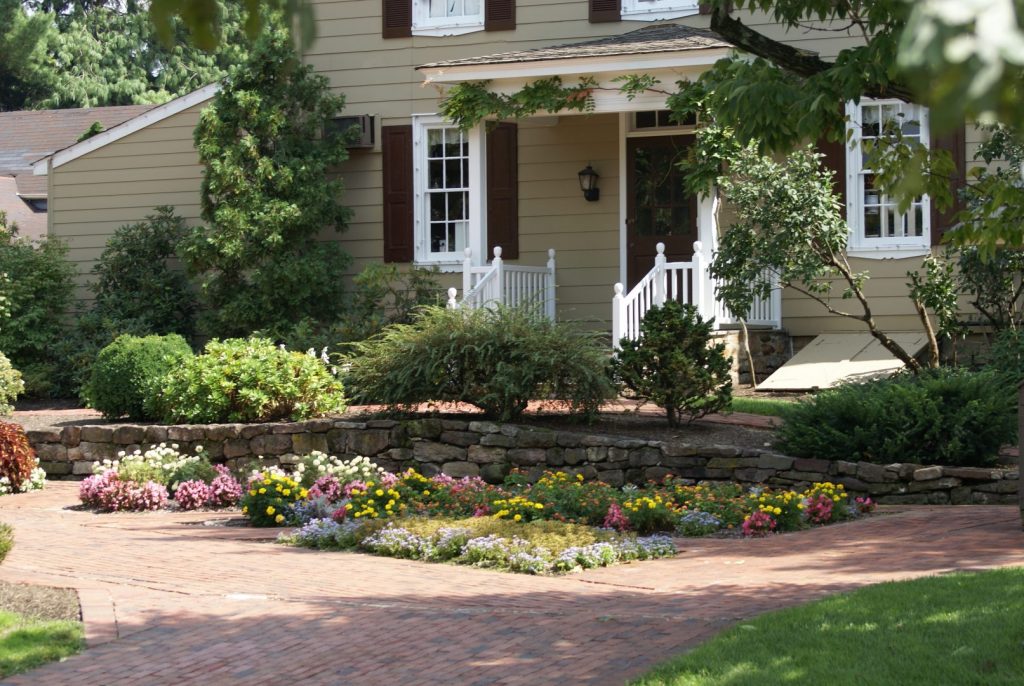
This charming home has a great look that is appealing to the eye, but a closer examination reveals that there are many accessibility challenges that a person would need to deal with before entering
Accessibility is frequently discussed in relation to how people are able to enter into their homes, businesses, places of employment, and other buildings. Clearly, we want it to be easy anyone to enter a structure and then go about their activities of being in that building. However, accessibility is much more than just being able to enter and pass through a doorway without difficulty.
In the case of someone’s homes, the term access frequently means that a person – the resident or a visitor or guest – can approach the front door (or the side door, garage door, rear door, or other suitable entrance into the home such as a sliding or french patio door) easily and without hindrance, open it (or cause it to open automatically), and enter without restriction. We say that such a home that can do this is accessible.
This definitely is true, but it’s just part of the accessibility picture. In the first place, there are different ways that people approach and enter a home. They may walk unaided. They may walk with assistance such as by using canes, arm canes, crutches, or a walker. They may sit in a wheelchair. They may hold onto the arm or shoulder of someone assisting them. They may use a service dog to guide them.
The way a door opens (how it is hinged or attached to a sliding track), the width of the doorway, what lies on either side of the doorway (and to the side of the doorway as one is approaching it on either side), the way the door opens (from the left or the right, from the middle, or swinging in or out), and how the door remains open (and for how long) factor into just how accessible that entrance is for a particular person.
All of this is important for getting someone inside the home – or in the reverse, getting them from within the home to the outside. Nevertheless, access has many more connotations that need to be considered and factored into an “accessible” home.
Let’s start with the ground outside the home. As one approaches the entrance, the sidewalk or walkway needs to accommodate anyone using it – the width of it, any slope (and the cross slope or the way it drains to the side), whether it is free from large cracks that might allow weed or grass intrusion or an uneven surface, if is it free from pooling water or puddles from low spots or the grass or downspouts draining onto the surface, and if it is a continuous hard surface rather than stones or other material with random spacing between them.
There might be an inclined walkway or a ramp, in addition to or in place of steps to the entrance stoop or porch. This needs to provide sure footing in all weather conditions and perhaps a railing, handrail, or curbing as well – even though it may not be required. It also may require flat landings periodically – depending on its length. However, any requirement that something be included is a function of the local codes. Any recommendations generally stem from ADA or ANSI guidelines. Nevertheless, for general safety considerations, railings, curbs, or landings – while not required or necessary – may be desired.
This gets someone inside the home, but the accessibility issue is far from resolved. Just because someone can enter a home – with or without any challenges or difficulties – might mean that their accessibility concerns are just beginning. Access means everything a person does in terms or sensory or mobility capacity. This includes how well they can see, hear, touch, or perceive something in front of them.
Being inside a home – whether this is the occupant or a visitor – and being unable to use many of the fixtures and features or to move about at will without interference or obstruction is far from having the accessibility we’re talking about here. It’s this broader look at accessibility which should concern us as aging in place specialists and professionals – making sure that the needs of everyone can be accommodated regardless of any issues, limitations, or conditions they might be facing or dealing with that impacts their ability to use the space well.
Accessibility in the larger sense means that the entire house – outside as well as inside – is available to them and usable without limitation. So often this is not the case. There is where we have a vital role in resolving the shortcomings that frequently exist in the homes across the land. Accessibility is a global issue that applies to everyone.
